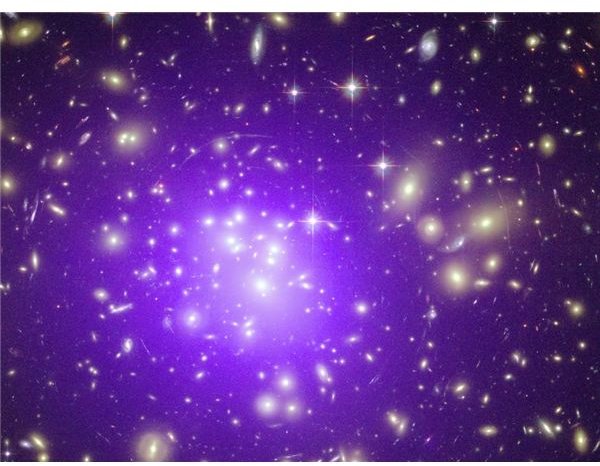Why Do Stars Appear to Twinkle or Scintillate?
Starry, Starry Night…
Look up on a dark, clear night and you may see a planet or two or three. However, in the same sky, you may well see hundreds, perhaps thousands of stars and star clusters. Pay close attention, and you are likely to see the effect that scientists call “scintillation,” but which most of us refer to as “twinkling.” How does the child’s verse go? “Twinkle, twinkle, little star…”
How We See Stars
Of course it takes no great stretch of the imagination to picture, mentally, how it is we can see stars. Stars are huge balls of hot plasma, most of which emit the visible radiation we call light. That light, travels through empty space at the enormous speed of 300 million meters per second. A very small amount of that light reaches our solar system and penetrates earth’s atmosphere of 78 percent nitrogen, 21 percent oxygen and 1 percent other gases. That light eventually reaches the pupils of our eyes and enters through the corneas. At the back of our eyes, the retinas are stimulated to produce electrical signals that travel along our optic nerves to our brain, and we “see” the light. We take notice that the light twinkles. What part of this process is responsible for the twinkling?
What Does Not Produce the Twinkling
It is not our eyes or our brain that produces the twinkling effect. Neither is it the stars, nor the empty space through which the light initially travels. Rather, it is when the light travels through the gases of earth’s atmosphere. But if that is the case, why doesn’t the light from the planets, the moon, and our own sun, twinkle. What makes them different? What principle(s) of physics is (are) involved? For one thing, although visible stars are of considerable size, due to their tremendous distances from observers on earth, they appear as pinpoint sources of light. That is not the case with larger objects. It is their very lack of apparent size that enables atmospheric differences to make them twinkle.
Physics Principle One - Air Properties Along Path
Atmospheric gases vary considerably in properties as one descends from the outer atmosphere to the inner atmosphere. Temperature and pressure changes result in density changes, and these differences result in a difference of index of refraction. Light tends to be broken up into its component parts in prismatic fashion when it moves from an area of one index to an area of another index. The light we perceive, however, is travelling in a nearly straight line, so these changes aren’t drastic ones; besides, changes may be back and forth. Nevertheless, they contribute to the property of twinkling. There is another factor, however.
Physics Principle Two - Atmospheric Movements
The atmosphere’s property changes are not limited to static pressure and temperature changes. In addition, air moves due to Coriolis effect, and “random” turbulences. All of this at least minimally affects the pathway of the light, adding to the twinkling effect. Perhaps the best way to visualize this is to imagine an automobile trip on an exceptionally hot day. The road is black asphalt, and the land is flat. In the distance on the left is a small object, perhaps a tiny building. As you stare at it, you notice the building appears to move slightly. The light bouncing off the building and to your eye travels through the hot air above the asphalt, producing what could be likened to that “twinkling” effect.
References and Resources
Enchanted Learning- “Why Do Stars Twinkle?”
https://www.enchantedlearning.com/subjects/astronomy/stars/twinkle.shtml
SAO/NASA Astrophysics Data System - “Why Do Stars Twinkle,” by M.A. Ellison
https://adsabs.harvard.edu/full/1952IrAJ....2....5E
NASA - 2000 Jul 25 Astronomy Picture of the Day - “Why Stars Twinkle” (click image to animate)
